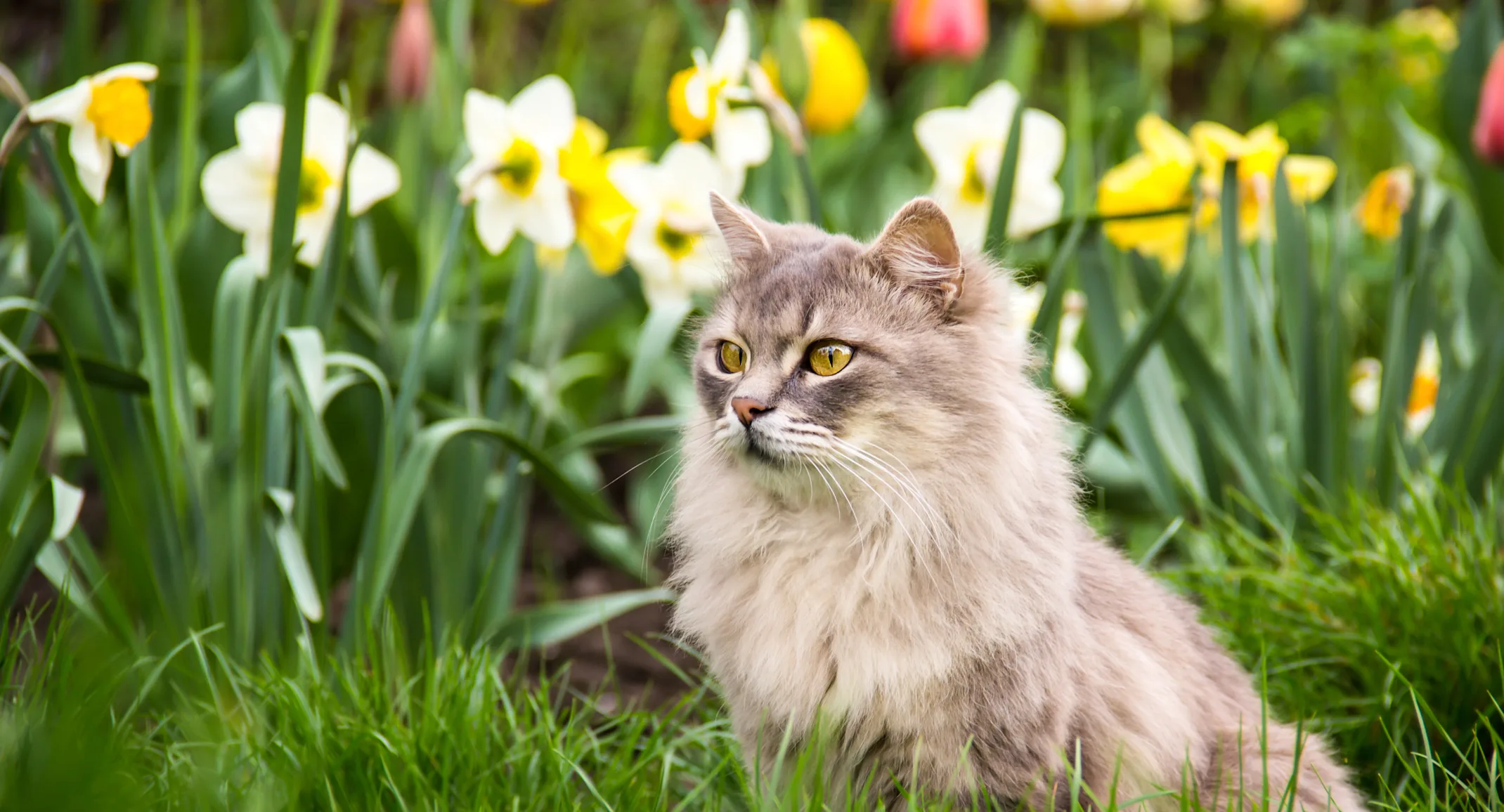Dangerous Beauty: Lilies Can Kill Cats
Cats

You've almost certainly heard the phrase "curiousity killed the cat," but you probably never associated that terrible fate with flowers. Unfortunately for cats, though, the beautiful lily can be deadly. True lilies (Lilium spp.) and daylilies (Hemerocallis spp.), both popular additions to bouquets and gardens, are highly toxic to cats. In fact, while some plants are only toxic in part, the entire lily plant is poisonous. From the roots to the stems and leaves to the flowers and pollen to the water in the vase, every part of the lily has the potential to kill your cat. Little nibbles of leaves or flowers, licking a few grains of pollen off fur or paws, even a little drink from the vase of water - all of these have the potential to cause irreversible, acute kidney failure in your cat. Luckily for dogs, lilies only give them a little gastrointestinal upset.
Highly Toxic Lilies
There are a number of different kinds of lilies that are highly toxic to cats. The most common ones include:
Asiatic Lily,
Day Lilies (all kinds),
Easter Lilies,
Japanese Show Lilies,
Stargazer Lilies,
Tiger Lilies,
Wood Lilies, and
Rubrum Lilies.
Symptoms of Lily Toxicity
If your cat ingests any part of one of these, you may initially notice lethargy, drooling, vomiting, and a loss of appetite. After about 12-24 hours, you may see signs of kidney damage, including increased urination and dehydration.Complete kidney failure - which will lead to death - due to lily toxicity can occur 24-72 hours after ingestion. Therefore, it's imperative to get your cat to an emergency vet immediately, after you realize they have come into contact with a lily, whether you see any symptoms or not. Delaying treatment can cause irreversible kidney damage. It's helpful if you take a picture of the lily (or take the plant itself) for identification.
Other Toxic "Lilies"
Other highly toxic flowers/plants called "lilies" (though they aren't true lilies) include Lily of the Valley and the Gloriosa/Flame Lily. Neither causes acute kidney failure, but they can both be deadly. Lily of the Valley causes symptoms like those of Foxglove (digitalis) poisoning: drop in heart rate, cardiac arrhythmias, vomiting, diarrhea, and seizures leading to death. The Gloriosa/Flame Lily is similar to the Autumn Crocus, and ALL parts of it are highly toxic (especially the tuber). Flame Lily toxicity can cause vomiting, diarrhea, organ damage, and seizures leading to death. So what's a flower-loving kitty owner to do? First, it's best if you don't allow any of these flowers into your home (or your garden if Kitty goes outside). Second, if you know Kitty ingested any amount of them, take your cat to the emergency vet immediately. The longer treatment is delayed, the worse the outcome may be.
Safer Alternatives
Luckily, there are many safer alternatives for your bouquets and gardens. In fact, Peruvian lilies (genus Alstroemeria) are much safer than true lilies. While these lovely flowers do contain the toxin tulipalin A, which can cause some gastrointestinal upset, their toxicity is low. Peace Lilies and Calla Lilies are also low-toxicity flowers. Like poinsettias, these two flowers contain oxalate crystals that cause mouth, tongue, and esophageal irritation and mild GI upset. Finally, white water lilies are not poisonous! Of course, if you aren't certain you can tell the difference between all the lilies, it's safest to ban them all from your home and go with other, much safer flowers (daisies, roses, orchids, etc.). As always, if you have questions or need to bring your cat for an exam, give us a call! And, again, if you think your cat may have ingested any part of a lily, we're here for emergencies.
